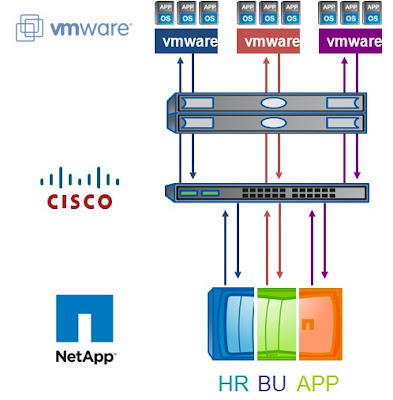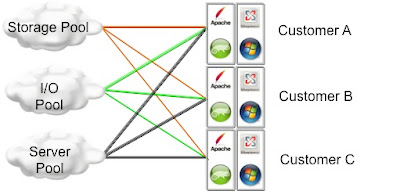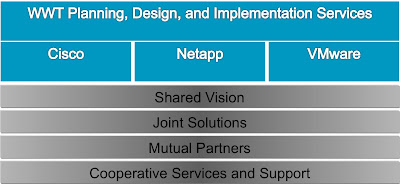The FlexPod Architecture is a Cisco Validated Design based on Cisco UCS Compute resources, Cisco Nexus, NetApp Storage, and VMware vSphere at the virtualization layer. The FlexPod architecture allows customers to adapt quickly and offers the needed flexibility to make fast changes without large amount of resources and processes.

Secure Multi-Tenancy
A shared cloud environment requires strict isolation between the different tenants that are resident within the infrastructure. The tenants can be different clients, business units, departments or security zones. Previously, customers with a shared cloud infrastructure were able to achieve “pockets” of isolation within the virtual server layer, the network layer, and storage, but never completely end-to-end.

Feature and Benefits of FlexPod
- Low-risk standardized shared infrastructure supporting a wide range of environments
- Highest possible Data Center efficiency
- IT flexibility giving business agility: scale out or up, but manage resource pools
- Complete Data Center in a single rack
- Flexibility in performance and capacity
- Fast setup for production
- Solutions guide for multiple environments
- Easy path for upgrading without fork lifting or data migrations
- Centralized management: NetApp OnCommand and Cisco UCS™ Manager
- VMs are isolated using vShield zone technology
- VMs connected and secured using Nexus products
- VMs on secure partitioned storage via MultiStore
- Service level assurance through VMware resource pools, Cisco QoS, and NetApp FlexShare
WWT and FlexPod
As a NetApp Star Partner with over 100 NetApp customers, combined with Cisco’s North American Partner of the Year, WWT is the leading FlexPod systems integrator. For example, WWT recently planned, designed, and implemented a FlexPod for a major financial institution based in New York and hosts a number of FlexPod demos throughout the United States.




